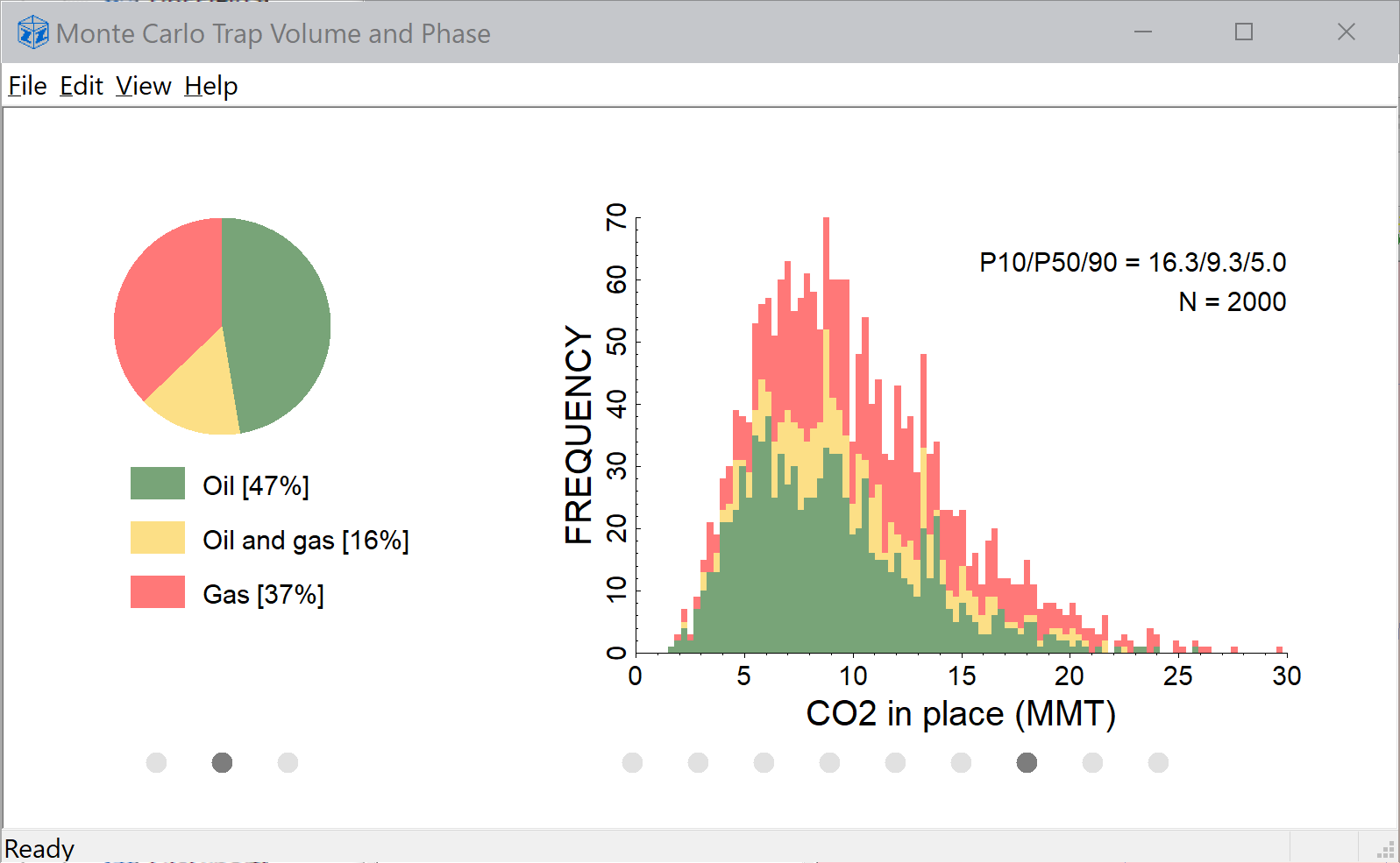| ZetaWare, Inc. --- ZetaWare Quick CO2 Storage Calculator |
| Home | Log Viewer | Ternary | UTM | Stiff | Source Potential | BHT Correction | H2 Storage | Rift Beta |
CO2freePhase = area * thickness * NTG * porosity * saturation * density
Where density is calculated based on formation temperature and pressure using Span and Wagner (1996) EOS (see reference below.
CO2disolved = area * thickness * NTG * porosity * (1-saturation) * solubility
Where solubility in formation water is calculated based on formation temperature and pressure based on Perkins (2003). Solubility is reduced with increasing salinity of formation water.
As you can see that this tool also calculates the expected fluid properties, density, viscosity, and solubility.
Carbon dioxide can exist in vapor at shallow depth, where pressure is below 1070 psi (7.38 MPa), but in most reservoir conditions, it is a super critical fluid. It is miscible with hydrocarbon fluids, and easily dissolved in oil or gas, and can change the phase behavior of hydrocarbon fluids. In typical reservoir conditions, density of CO2 is similar to that of oil. But in low temperature, high pressure reservoirs, it can be heavier than oil, and even heavier than water. Hope this calculator can help you decide how it may affect your oil and gas prospect, or how much CO2 can be stored in a particular reservoir.
This tool is provided free and as is, ZetaWare, Inc. is not responsible for any errors or inaccuracies.
In Trinity 3D, we have built a full probabilistic tool that provides the likely phase, and volumes of oil, gas and CO2, based on reservoir conditions and the geological model (structure map, thickness/isopach, NTG, porosity, saturation, top seal, etc.).
Below is an example of probabilistically calculated storage capacity of CO2 in place in a depleted oil and gas field. Storage capacity is modeled under the PVT conditions of both the petroleum phases and CO2. The results provides the probability of reservoir conditions in dual phase oil and gas, or single phase oil or gas. The CO2 storage capacity in these scenarios are calculated. Probability of seal failure can be modeled as well. This is the latest feature added to Trinity 3D, our all purpose PSA analysis toolkit.

References
- Span, R. and W. Wagner, 1994, A new Equation of State for Carbon Dioxide Covering the Fluid Region from Triple Point Temperature to 1100 K at Pressures up to 800 MPa, J. Phys. Chem. Ref. Data, Vol. 25, No. 4, 1996.
- Perkins E (2003) Fundamental geochemical processes between CO2, water and minerals. Alberta Innovates-Technology Futures
Copyright ©2003-2022, ZetaWare, Inc. All rights reserved